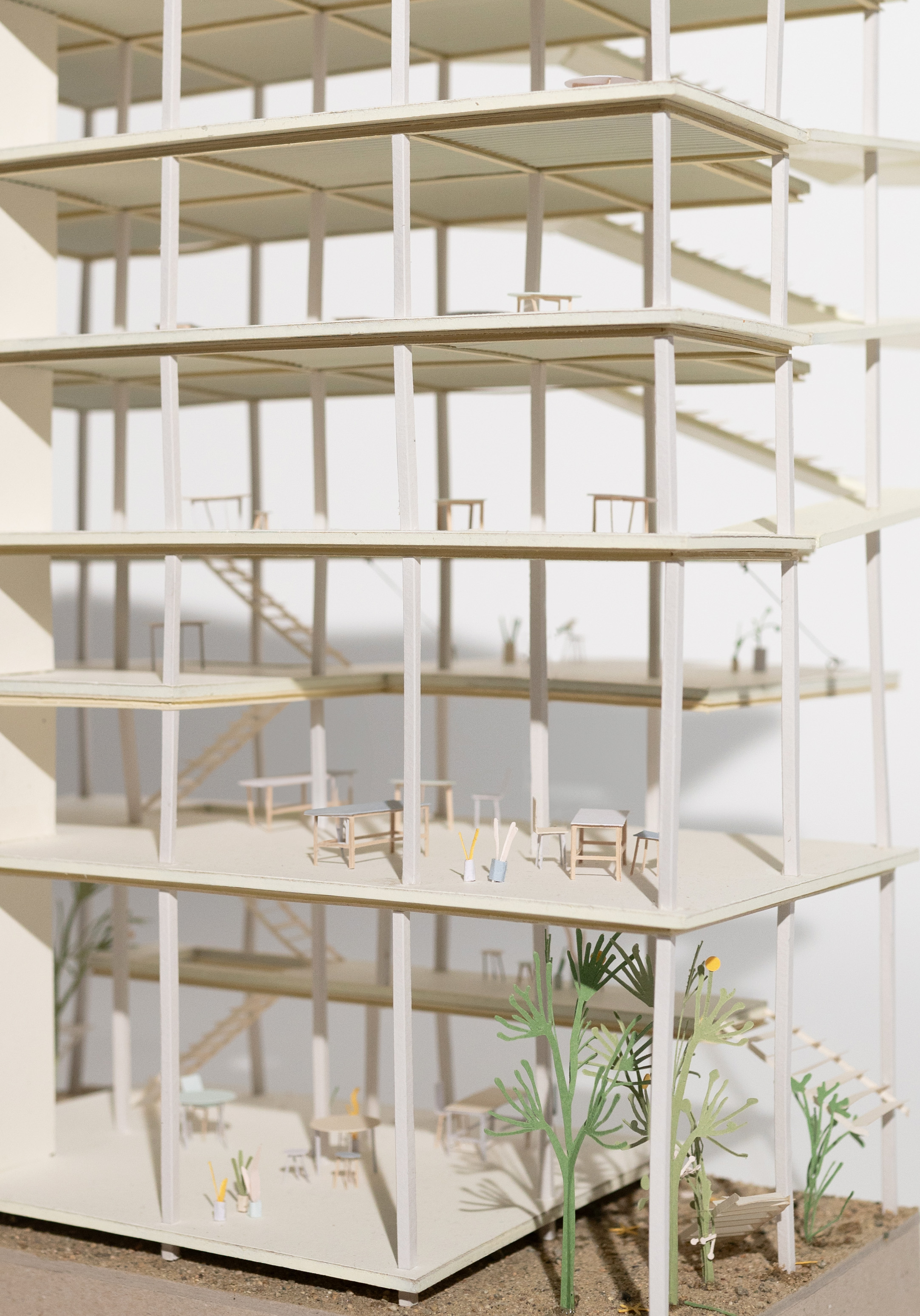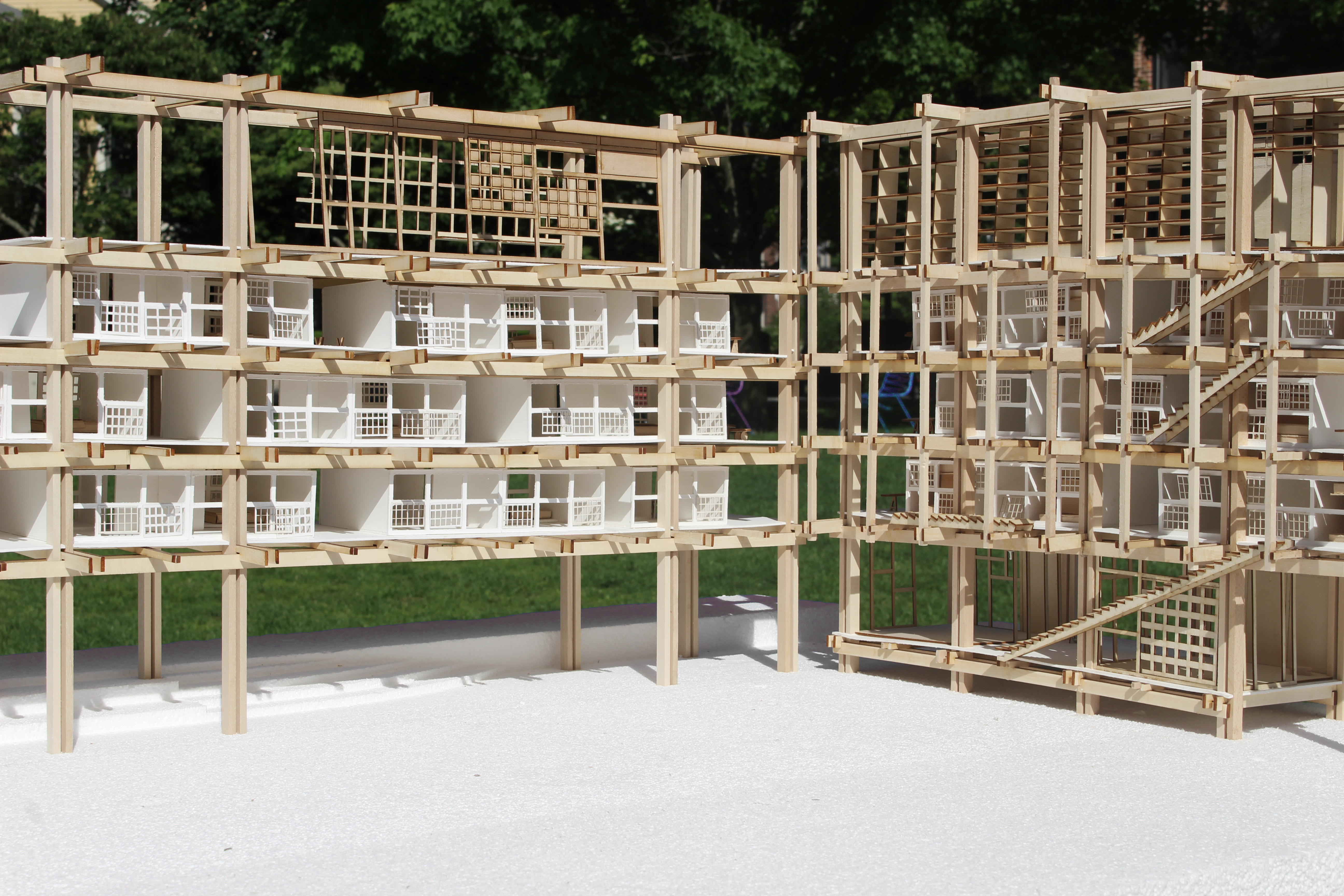Between Roots and Rooftops

The site in front of Shimokitazawa Station was once a bustling black market and social hub. Over time, it was fenced off and left unresolved—an irregular, oversized urban lot disconnected from the surrounding city fabric.
This project recalibrates the void by intersecting two linear structures, organizing the site into four interconnected plazas: a central plaza facing the station, a northern garden extending into the city, a raised terrace connecting to commercial streets, and a quieter courtyard reserved for residents. Built on a simple 3-by-6 wooden frame grid, these structures frame a range of in-between spaces—housing event venues above, hotel units in the middle, and porous, publicly accessible urban commons at ground level.
Operable windows, sliding doors, and layered façades foster rich transitional conditions, allowing for shifting views, flexible uses, and visual exchange. Across day and night, the building reveals varying spatial rhythms, redefining the role of the wall—not as enclosure, but as a dynamic, permeable framework for urban life.
Typology: Mixed-use bar building
Program: Shops, cafés, teahouse, rental units
Scale: 3400 square meters (site area)
Material: Wood, glass, concrete
1 to 50 partial model indicating the plaza in front of the station.
Diagrams showing structural systems, unit distribution, circulation, and the configuration of urban plazas.
Ground floor plan illustrating the building and its four interconnected plazas.
Rendering indicating the plaza’s location in front of the station.
Text and images © Xinyi Chen, 2025
This project was conducted as part of “'Moshi Moshi, Shimokitazawa': for an Architecture of Conviviality”, a spring 2025 studio at the Harvard GSD. Please click here to read more about this studio and see other projects.



